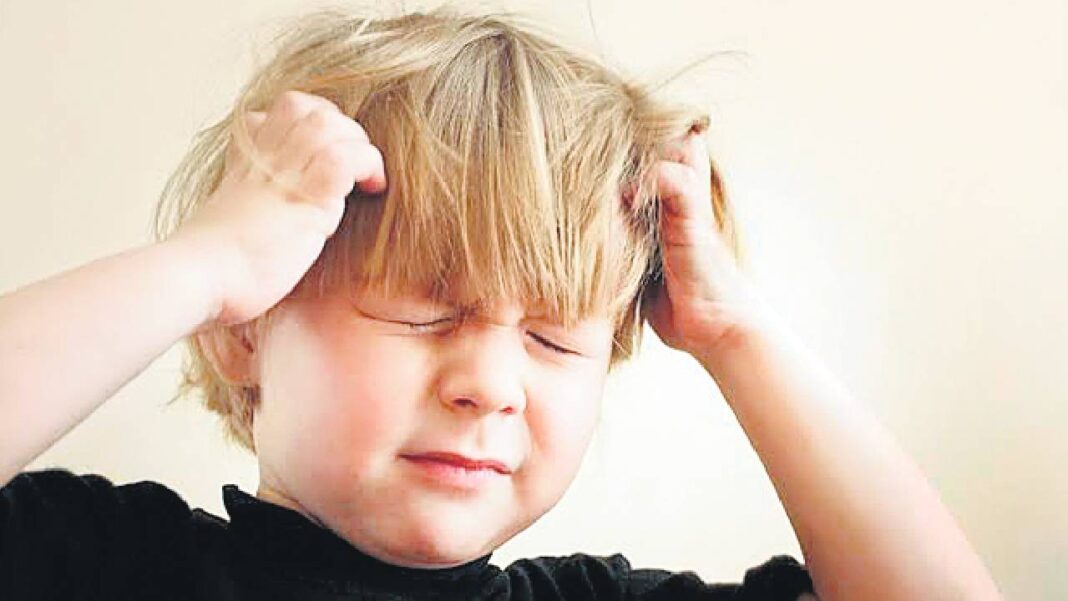Migraine is a severe type of headache that causes throbbing or pulsating pain, usually on one side of the head. It can come with other symptoms like nausea, vomiting, and sensitivity to light and sound. Migraine attacks can last for hours or even days and can make it difficult to carry out daily tasks.
There are various types of headaches, and migraine falls into the primary category, which means they are not caused by another medical condition. When you experience a migraine, certain triggers, such as physical activity, bright lights, loud noises, or strong smells can worsen the pain. Migraine typically persists for a minimum of two hours, but they can last much longer.
Dr. Vaishakh Anand, Consultant Pediatric Neurologist, Amrita Hospital, Kochi shares, “The exact cause of migraines is unclear, but genetics play a significant role, with up to 60% of cases believed to be influenced by genetic factors. While migraines were previously attributed to tight muscles and dilated blood vessels in the head, newer theories propose changes in brain chemicals or electrical signaling as potential contributors. Other headaches can result from disruptions in the nervous system’s pain communication pathways. Lack of sleep and certain brain abnormalities can contribute to chronic headaches, although they are rare. Migraine is thought to occur when specific brain neurons malfunction, impacting the pain-regulating nerve system. Migraine triggers include stress, hormonal changes, skipping meals, dehydration, caffeine, certain foods, altered sleep patterns, smoking, and weather fluctuations.”
Migraine can affect children of any age. It is the most common type of primary headache in children. Migraine is more prevalent in females, and the incidence increases as they get older. Even young infants can experience migraines, although they can’t express their pain. Signs such as excessive crying or rocking back and forth may indicate severe discomfort. Very often migraine is misdiagnosed as sinusitis, myopia-related headache or laziness.
There are two main types of migraine in children. The first type, called migraine without aura, is the most common. Some children may experience an aura, which involves visual or sensory changes before the headache starts. These changes can be distressing, such as seeing spots, sensitivity to light and sound, or tingling sensations. Auras typically last a few minutes and go away when the headache begins. Migraine with aura is the second type and occurs in a smaller percentage of children. They often start later in the day for young children and in the early morning for older children.
Common triggers include changes in sleep patterns, dehydration, certain foods and drinks, stress, and environmental factors like weather changes and bright lights.
If your child experiences severe headaches accompanied by symptoms like vomiting, confusion, or sudden changes in vision, seek medical attention immediately.
Understanding and managing migraines in children may require keeping a record of their symptoms and triggers. By identifying and minimising triggers, we can help reduce the frequency of migraine episodes and improve the child’s quality of life.
The treatment for headaches in children is determined by their doctor, taking into account their age, overall health, and the type and severity of the headaches. The goal is to prevent headaches from happening.
Treatment options may include
Resting in a quiet, dark place.
Medications prescribed by the doctor.
Managing stress.
Avoiding known triggers like certain foods, lack of sleep, and fasting.
Making dietary changes.
Engaging in regular exercise.
For migraines, specific medications may be used, including those to stop a migraine in progress, over-the-counter medicines to relieve symptoms, and daily medications to prevent severe migraines. Some headaches may require immediate medical attention, including hospitalization or diagnostic testing. Treatment is based on the underlying cause and recovery will vary. For acute treatment, over-the-counter pain relievers and prescribed medications are recommended. Lifestyle changes and counseling can also help prevent migraines from worsening.
Parents and children can use various strategies to manage migraine symptoms. During an episode, move the child to a quiet, dark room and apply cool or warm compresses to the head. Offer an eye mask if they’re sensitive to light, and massage tense muscles. Encourage sleep if it helps. Keep a symptom diary noting the time, duration, severity, treatments, and possible triggers.
Prepare for migraine episodes by creating a migraine kit with medication, packs, an eye mask, water, and a symptom diary. Learn about triggers and warning signs, and inform schools and caregivers about the child’s condition.
Provide emotional support by being reassuring and calm during episodes. Educate the child about migraines and involve them in managing their condition, such as keeping a symptom diary.
Administer pain medication as soon as possible to stop the migraine from progressing. By implementing these strategies, parents and children can effectively manage migraine symptoms and reduce fears associated with the condition.




